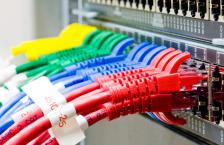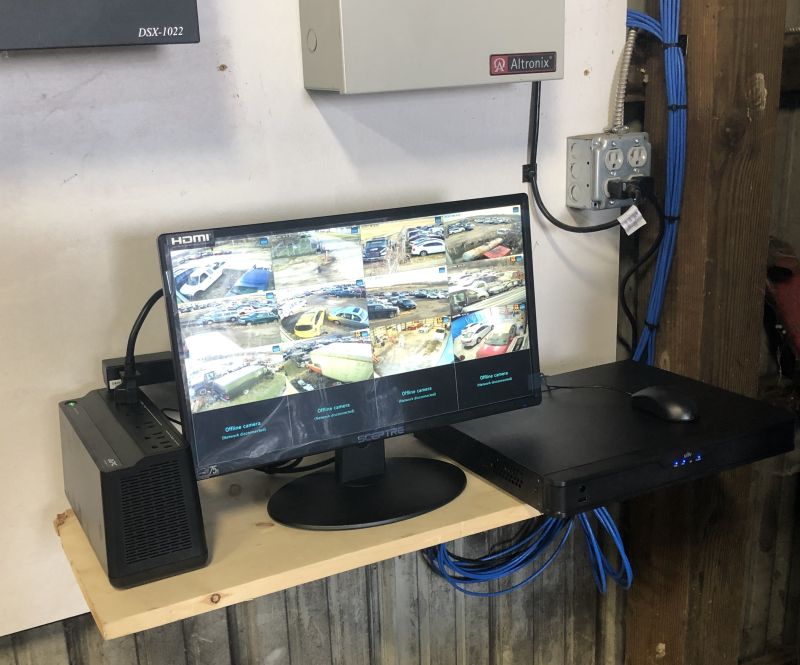Connecting storage devices to a computer’s motherboard is critical for fast data transfers and overall system performance. SATA cables play a pivotal role in facilitating these connections, which is why choosing the right cable and installing it correctly is so important. This comprehensive guide will equip you with expert knowledge to select, utilize, and troubleshoot SATA cables for flawless data connections in 2024 and beyond.
A Brief History of SATA Cables
Before diving into the key considerations around SATA cables, it helps to understand where they originated from. SATA stands for Serial Advanced Technology Attachment and replaced the older parallel ATA or PATA cables in the early 2000s. The serial design allowed for major improvements in transfer speeds, cable management, and device connectivity.
Where PATA cables were wide, bulky, and limited to 133MB/s transfer rates, SATA cables had a more compact design and delivered blazing fast speeds exceeding 6Gbps. This serial evolution paved the way for connecting high-performance storage solutions like solid-state drives (SSDs) which continue to push speed boundaries today.
SATA Cable Types
There are three main SATA cable varieties on the market, each suited for specific use cases.
1. SATA Data Cables
These standard SATA cables transmit data between storage devices and motherboards at fast transfer rates. They come in several speed grades:
- SATA I – 1.5Gbps
- SATA II – 3Gbps
- SATA III – 6Gbps
Most modern motherboards and storage solutions support the SATA III standard for lightning-quick 6Gbps data transfers. Choosing anything slower will throttle peak performance.
SATA data cable
SATA data cables with locking connectors for secure connections.
2. Power Cables
Designed to deliver electrical power to devices, SATA power connectors have an “L” shaped design with 15 pins. They are most commonly used for hard drives, SSDs, and optical drives that require both data transmission and power delivery over separate cables.
3. External Cables
eSATA cables feature more rugged, locking connectors designed for external devices. The connectors withstand much higher insertion cycles, making them perfect for frequently unplugged drives. eSATA cables support the same 6Gbps transfer speeds as internal SATA.
Now that you know the SATA cable types available, focus on matching cable specs to devices for optimal performance.
Key Considerations For Choosing SATA Cables
Follow these tips when selecting the right SATA cables:
Get The Latest SATA Standard
Choose SATA III cables and devices for lighting fast 6Gbps data transfers. The SATA III standard has been mainstream for over a decade, so there’s no reason to settle for slower legacy hardware.
Pick The Right Length
Shorter SATA cables minimize signal degradation across the wire, allowing for peak performance. Aim for cables under 2 feet where possible, using cable extenders if more length is absolutely required.
Consider Locking Connectors
Cables with locking connectors click securely in place for more reliable connections. They also withstand frequent unplugging better for removable drives.
Ensure Durability
Well-insulated, thicker cables are more durable and resistant to damage over years of use. Flexible cables hold up better in cramped cases with tight cable bends.
Confirm Device/Motherboard Compatibility
Double check that any SATA cable matches the SATA generation supported by devices it will connect. Similarly, confirm the physical connectors match.
Step-By-Step SATA Cable Installation
Once you’ve selected the right SATA cables, follow these steps for smooth installation:
- Power down and unplug the system to avoid electrical damage.
- Inspect SATA ports on the motherboard and storage devices for dust, debris or damage. Use compressed air to clean ports if needed.
- Connect the SATA data cable securely to the motherboard and storage device ports. Listen for a firm “click” to confirm proper insertion.
- Attach the SATA power cable to device ports if the drive needs both power and data connections.
- Organize cables neatly with velcro or zip ties so airflow isn’t restricted.
- Re-connect power and boot up the computer to verify SATA devices are detected properly in BIOS.

Troubleshooting Guide – Common SATA Issues
SATA connections failing? Try these troubleshooting tips before panic sets in:
Cables loose or disconnected – Re-seat SATA cable connections firmly until locking clicks are heard.
Old/faulty SATA cables – Swap suspect cables for brand new SATA III replacements.
Incorrect SATA port – Double check that the SATA port matches your device type. Some only work with specific ports.
Outdated BIOS – Update motherboard BIOS in case older versions don’t detect newer SATA devices properly.
Disabled SATA ports – Check that relevant SATA ports are enabled in BIOS, not disabled or set to RAID mode.
Driver issues – Update SATA/chipset drivers from motherboard OEM website to resolve conflicts.
In most cases, SATA connectivity issues can be resolved by reseating cables, swapping to new cables, or updating related software drivers.
Closing Thoughts
That wraps up this 2024 guide on selecting, installing, and troubleshooting SATA cables for optimal storage performance. Following the tips outlined will help you achieve lightning-fast data transfers free of connectivity issues.
Key takeaways include:
- Choose SATA III cables for blazing 6Gbps transfer speeds
- Opt for shorter, locking cables under 2 feet
- Confirm port and connector compatibility
- Firmly connect data and power cables
- Organize cabling for unrestricted airflow
Have you recently upgraded your computer’s storage with a speedy new SSD or hard drive? What SATA cable considerations did you make in the process? Share your first-hand experience below!






0